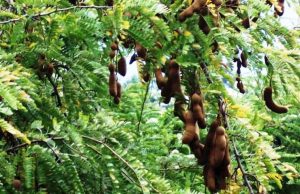Cabbage is a leafy green, red or white biennial vegetable grown annually. This cruciferous vegetable belongs to plant family brassicaceae and is round or oval in shape. It consists of soft, light green or whitish inner leaves covered with harder and dark green outer leaves.
Cabbage belongs to the group of cole crops and hence is closely related to broccoli, cauliflower and kale among others. It is widely used throughout the world and can be incorporated into our daily diet in a number of ways: as salads, boiled into soup, served raw or steamed into stew with water and salt.
Cabbage is a powerful healing plant due to its high sulphur and vitamin C contents. In fact, the inexpensiveness and health benefits of cabbage earned it its nickname, “drug of the poor” during the Middle Ages. And despite its impressive nutritional and health potential, cabbage is often overlooked in preference to other vegetables.
Cabbage like other vegetables is a very rich source of roughage. The deficiency of roughage in the body can be really fatal and can result in constipation, which is the root cause of many ailments including stomach ulcers, headaches, gastrointestinal cancers, indigestion and loss of appetite. The dangers of roughage deficiency even extend to skin diseases such as eczema and premature ageing.
Therefore, regular consumption of cabbage as part of one’s diet can be very important in protecting one’s body from a myriad of these diseases and disorders. Its regular consumption is associated with a healthy body complexion and increased energy. The low fat and high fibre contents in cabbage make it a wonder plant for weight loss. In fact, the fibres also enable the body to retain water and it maintains the bulkiness of the food hence improving bowel movement and preventing incidences of constipation.
Cabbage is rich in sulphur, which is a very useful nutrient as it fights infections. Sulphur is also credited with the ability to reduce the frequency and severity of ulcers. A deficiency of sulphur can result in microbial infections and this can greatly reduce healing speed. The rich amount of vitamin K and anthocyanins in cabbage is known to be very important for mental function and concentration.
These nutrients also prevent nerve damage hence improving one’s defence against Alzheimer’s disease and dementia. The high level of potassium ion is also very essential for keeping one’s blood pressure within the normal range. Red cabbage has the highest amount of these compounds and the natural red pigments of red cabbage (betalains) is said to lower blood sugar levels and boost insulin production hence plays an important role in prevention and management of diabetes and heart diseases. Betalains also have powerful anti-inflammatory properties.
Regular consumption of cabbage along with other cruciferous vegetables can provide anti-aging benefits to the skin. The rich amount of Vitamin C in this vegetable keeps the skin youthful and delays the aging process. The vitamin C also plays a pivotal role in boosting the immune system and fighting off the body’s free radicals.
In some communities, a warm decoction made from cabbage leaves is administered to relieve headache. Pimples and acne spots can be removed by use of steamed cabbage leaves. Here, the steamed leaves of cabbage is compressed between a linen cloth and cotton to make them smooth and soft and placed on the affected body spot overnight to enhance a spotless skin with regular application. In fact, this unique effect of cabbage in drying up acne is attributed to the sulphur mineral in it which is considered as ‘nature’s beauty mineral’. (Richard Komakech)






